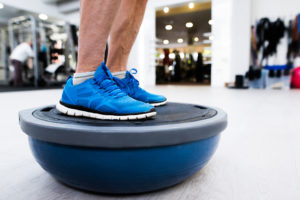
Maintaining good balance is a central component of healthy aging. It often becomes compromised as people advance in their years and it can have some dire consequences. Falls, fractures, and hospitalizations are more frequent for those 65+.
Improving balance is multi-faceted, but one way to help is integrating balance-promoting movements into your daily routine. These movements can help with muscle strength, agility, balance, and spatial awareness.
A couple of great moves to build strength and balance in the lower body are squats and lunges. They can also easily fit into your daily routines. For example, when you’re standing up from the toilet, a chair, or placing items in a low drawer, you can squat.
Instead of bending over to put away your socks, for example, use your legs and squat down. You can use the wall for support if needed. Similarly, when you’re getting up from the toilet, try to avoid using your arms to push or pull you. Instead, focus on driving your legs into the floor to propel you upwards.
When walking to the bathroom, try lunging for half the distance. For the rest of the way, walk or shuffle sideways to work on lateral movement. Simple tactics like these can fit into your regular routine without having to dedicate time to build strength and balance.
Other things you can try include:
- Standing on one leg while watching television
- Hopping while watching TV
- Stepping side to side while cooking
Each of these tactics can fit seamlessly into your day and help improve balance. A program called Lifestyle Integrated Functional Exercise (LiFE) has shown to be a big help in preserving balance.
Researchers looked at how the LiFE program, which worked the above movements into people’s daily routines, helped prevent falls compared with structured exercise or no activity. They found that not only did LiFE work best at reducing falls but that people stuck with it.
If you’re looking to preserve balance in the future, look for ways to integrate effective movements into your daily routine.